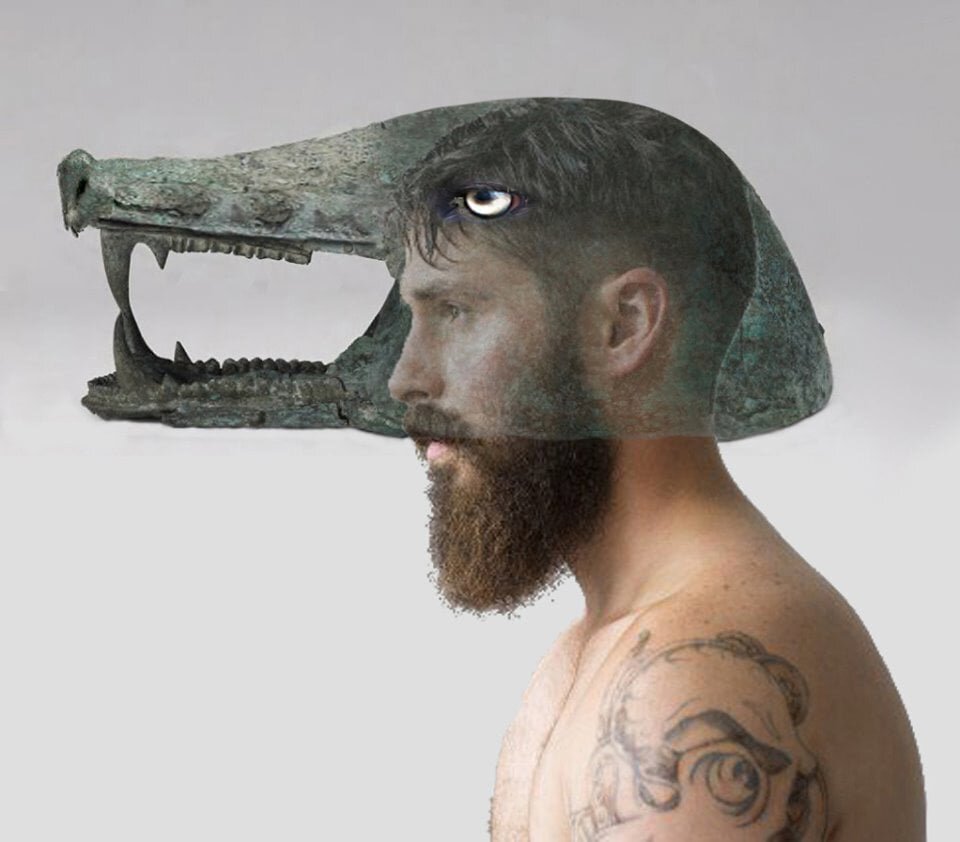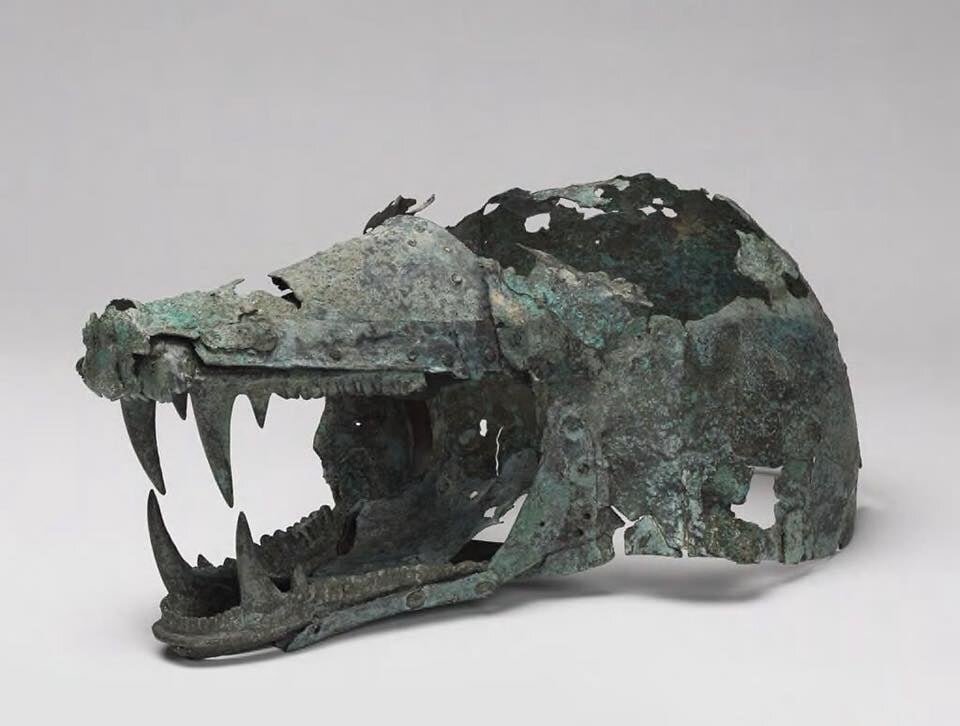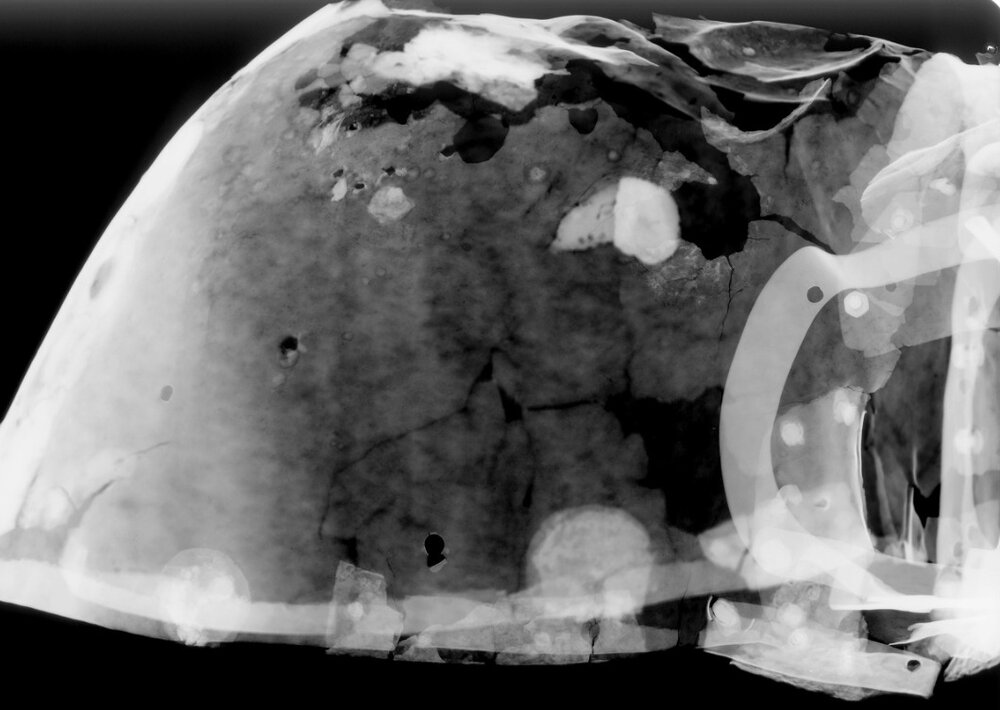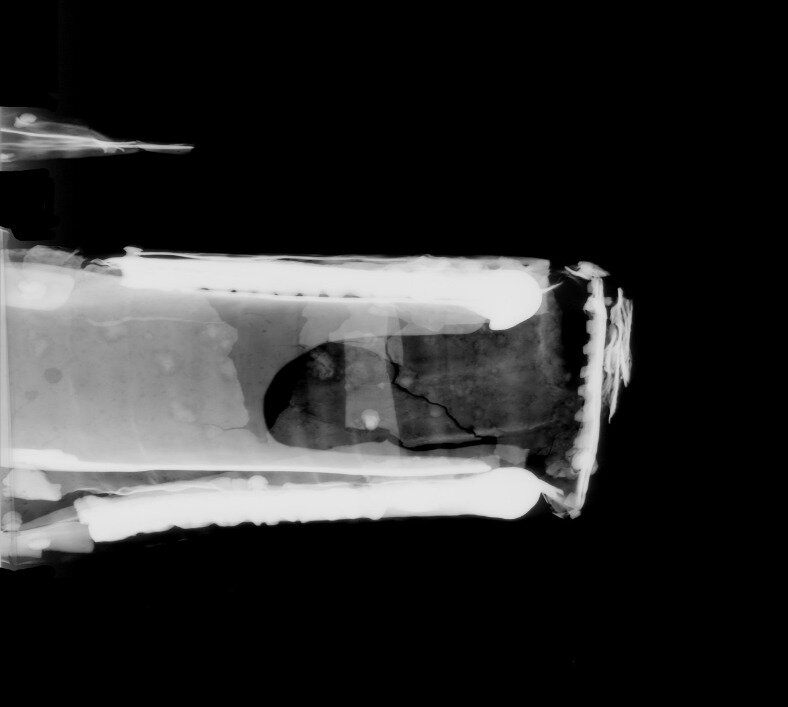Etruski hełm wilczy. Arcydzieło starożytnego wyposażenia

 The Etruscan wolf’s helmet, that is currently kept in Harvard’s Art Museum, is undoubtedly a masterpiece of ancient equipment. Despite it’s name, the etruscan helmet resembles a boar head. It dates back to archaic to classical period (6th-5th century BCE) an has modern additions. It is bronze and cast and hammered.
The Etruscan wolf’s helmet, that is currently kept in Harvard’s Art Museum, is undoubtedly a masterpiece of ancient equipment. Despite it’s name, the etruscan helmet resembles a boar head. It dates back to archaic to classical period (6th-5th century BCE) an has modern additions. It is bronze and cast and hammered.Etruski hełm wilczy, który obecnie znajduje się w Muzeum Sztuki Harvarda, to bez wątpienia arcydzieło starożytnego wyposażenia. Wbrew nazwie ten hełm etruski przypomina głowę dzika. Pochodzi z okresu archaicznego do okresu klasycznego (VI-V wiek p.n.e.) i posiada nowoczesne dodatki. Jest z brązu, odlewany i kuty. Inne elementy hełmu to ołów, żelazo i arsen. Kawałki te były częścią starej naprawy i zostały usunięte z obiektu.

The patina is green and has areas of black and underlying areas of red. The top components of the nose and the hemispherical dome have areas of rough, raised green corrosion products and brown burial accretions.
Patyna jest zielona i ma obszary czarne i pod spodem obszary czerwone. Górne elementy nosa i półkulistej kopuły mają obszary szorstkich, wypukłych zielonych produktów korozji i brązowych narośli pogrzebowych.
Numerous large losses are the result of corrosion and breaks in the brittle, mineralized metal. There are numerous ancient repairs, including the flaps of metal folded and riveted around cracks on the lower edge of the hemispherical dome and the irregular shapes of metal riveted to the dome where it meets the lower jaw on both sides. The cast teeth are modern additions. They are not life casts and were irregularly modeled directly in wax to fit the shapes of the sheet metal assembly that form the jaw and top portions of the mouth. A modern sheet-copper framework in the top and bottom sections of the mouth and a patinated but modern ridged palette-shape on the top of the mouth both help to support weight of these teeth. Many of the rivets are ancient, but some have been replaced with modern copper pins or brass screws.
Liczne duże straty są wynikiem korozji i pęknięć w kruchym, zmineralizowanym metalu. Istnieje wiele starożytnych napraw, w tym metalowe płaty zagięte i nitowane wokół pęknięć na dolnej krawędzi półkulistej kopuły oraz nieregularne kształty metalu przynitowanego do kopuły, gdzie styka się z dolną szczęką po obu stronach. Odlane zęby to nowoczesne dodatki. Nie są to żywe odlewy i zostały nieregularnie wymodelowane bezpośrednio w wosku, aby pasowały do kształtów zespołu blachy, który tworzy szczękę i górną część ust. Nowoczesna konstrukcja z blachy miedzianej w górnej i dolnej części jamy ustnej oraz patynowany, ale nowoczesny, prążkowany kształt palety w górnej części jamy ustnej pomagają utrzymać ciężar tych zębów. Wiele nitów jest starych, ale niektóre zostały zastąpione nowoczesnymi kołkami miedzianymi lub mosiężnymi śrubami.
The hemispherical dome was raised by hammering, and its irregular thickness ranges from 0.3 to 0.7 mm. The top and snout sections of the nose have the same thickness as the dome, which in neither case was a measurement error caused by the rough corrosion products on the surface of these components. The other parts of the object are also raised by hammering but are generally thinner (2.0 to 4.0 mm). They form the bottom exterior and interior surfaces of the mouth, the narrow strips at the lower edges of the top of the mouth, and the repair reinforcements previously mentioned. A serrated sheet inserted in the folded and riveted front section of the nose is less deeply corroded than the snout but appears to be ancient. The serrations may depict teeth, and it is possible that similar teeth once decorated the other portions of the mouth. The remains of two oval repoussé depressions on the front of the dome depict eyes. No inlay or added material is visible in the eyes.
Półkulistą kopułę wzniesiono metodą kucia, a jej nieregularna grubość waha się od 0,3 do 0,7 mm. Część górna i pysk mają taką samą grubość jak kopuła, co w żadnym wypadku nie było błędem pomiarowym spowodowanym przez szorstkie produkty korozji na powierzchni tych elementów. Pozostałe części przedmiotu są również podnoszone przez młotkowanie, ale są one na ogół cieńsze (2,0 do 4,0 mm). Tworzą one dolną zewnętrzną i wewnętrzną powierzchnię jamy ustnej, wąskie paski na dolnych krawędziach górnej części jamy ustnej oraz wspomniane wcześniej wzmocnienia naprawcze. Ząbkowany arkusz włożony w zagiętą i nitowaną przednią część nosa jest mniej skorodowany niż pysk, ale wydaje się być stary. Ząbki mogą przedstawiać zęby i możliwe, że podobne zęby zdobiły kiedyś inne części ust. Resztki dwóch owalnych zagłębień repussé na przodzie kopuły przedstawiają oczy. W oczach nie widać wkładki ani dodanego materiału.

Prior to the 1998 conservation treatment of this object, numerous additional fragments, many of them modern, were joined to the object and completed many of the losses to the original components. These fragments greatly confused the question of what was original as well as what the original object looked like. They were removed and stored separately from other loose fragments that are ancient but either do not belong to this object or cannot be properly fitted to it. Future work on the object could involve completely removing the replacement teeth. It is also possible that the entire lower jaw is a modern fabrication from ancient sheets of metal.
Przed rozpoczęciem prac konserwatorskich w 1998 r. dołączono do obiektu liczne dodatkowe fragmenty, wiele z nich współczesne, uzupełniając wiele ubytków oryginalnych elementów. Fragmenty te mocno myliły pytanie, co było oryginalne, a także jak wyglądał oryginalny przedmiot. Zostały one usunięte i przechowywane oddzielnie od innych luźnych fragmentów, które są stare, ale albo nie należą do tego obiektu, albo nie mogą być do niego odpowiednio dopasowane. Przyszłe prace nad obiektem mogą wiązać się z całkowitym usunięciem zębów zastępczych. Możliwe też, że cała dolna szczęka jest nowoczesnym wytworem ze starożytnych blach.
Tłumaczenie automatyczne ze źródła: https://www.thearchaeologist.org/blog/the-etruscan-wolfs-helmet-a-masterpiece-of-military-equipment?fbclid=IwAR2W2vMU1d6jD9WK26v9Av0YpVeCweuIs1Ey149Dp1tgNzOXaQww4N3tqVA
